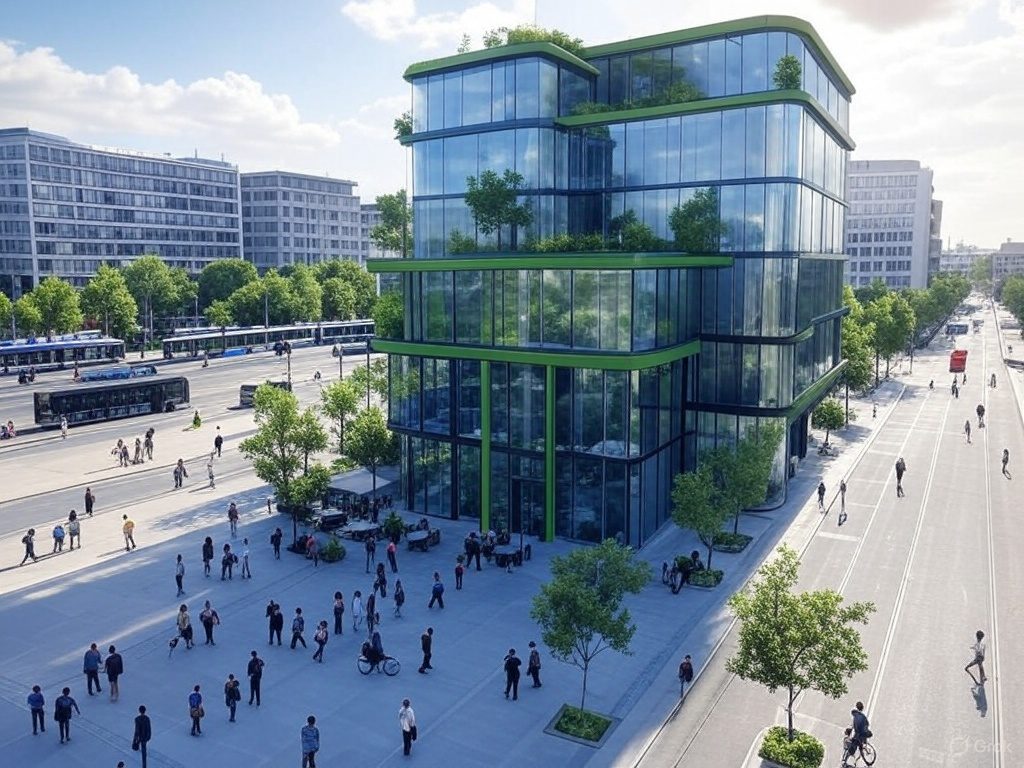Sustainable urban planning is an essential discipline that focuses on designing and managing cities to promote environmental responsibility, economic stability, and social equity. As the global population increases, urban areas must adopt sustainable strategies to accommodate growth while minimizing negative impacts on the planet. This article provides comprehensive Sustainable Urban Planning Homework Help, covering key principles, strategies, case studies, and expert resources to support students in their studies.

What Is Sustainable Urban Planning?
Sustainable urban planning refers to the practice of designing cities that balance development with environmental sustainability, economic viability, and social well-being. This approach integrates:
- Green Infrastructure – Parks, green roofs, and urban forests to enhance air quality and reduce heat islands.
- Public Transportation Systems – Efficient, low-emission transit options to reduce congestion and pollution.
- Smart Growth Strategies – Mixed-use developments that optimize land use and reduce urban sprawl.
- Energy-Efficient Buildings – Eco-friendly architectural designs to reduce carbon footprints.
- Waste and Water Management – Sustainable solutions for recycling, wastewater treatment, and conservation.
For further reading, visit the United Nations Sustainable Development Goals (UN SDGs) and Urban Land Institute (ULI).
Principles of Sustainable Urban Planning
- Environmental Protection – Implementing eco-friendly designs and conservation strategies.
- Social Equity – Ensuring accessible housing, public spaces, and services for all.
- Economic Growth – Supporting local businesses and job opportunities.
- Resilience – Preparing cities for climate change and natural disasters.
- Community Engagement – Encouraging participation in urban planning decisions.
Key Strategies in Sustainable Urban Planning
1. Green Infrastructure
Incorporating green spaces helps combat pollution, improves urban biodiversity, and enhances public health.
2. Smart Cities and Technology Integration
The use of smart grids, IoT devices, and AI-driven traffic systems improves efficiency in resource management.
3. Sustainable Transportation
- Expanding bike lanes and pedestrian-friendly streets.
- Investing in electric public transportation.
- Implementing congestion pricing to reduce emissions.
4. Affordable and Sustainable Housing
- Promoting mixed-income housing developments.
- Using energy-efficient building materials.
- Supporting adaptive reuse of old buildings.
5. Renewable Energy Integration
- Encouraging the use of solar, wind, and hydro energy sources.
- Implementing energy-efficient policies for commercial and residential areas.
For more insights, explore The World Resources Institute (WRI) and The Global Green Growth Institute (GGGI).
Benefits of Sustainable Urban Planning
- Reduces Carbon Footprint – Lowers emissions through sustainable energy and transit solutions.
- Enhances Quality of Life – Provides access to clean air, green spaces, and efficient infrastructure.
- Supports Economic Growth – Encourages job creation in green industries.
- Preserves Natural Resources – Promotes efficient water and waste management.
Challenges in Implementing Sustainable Urban Planning
- High Initial Costs – Investing in green technology and infrastructure requires funding.
- Policy and Regulatory Barriers – Government policies must align with sustainability goals.
- Community Resistance – Stakeholders may be hesitant to change.
- Technological Limitations – Some cities lack the resources to implement smart solutions.
For more details on overcoming these challenges, visit the International Council for Local Environmental Initiatives (ICLEI).
How to Get Sustainable Urban Planning Homework Help
Understanding sustainable urban planning requires research and expert guidance. Here are effective ways to get Sustainable Urban Planning Homework Help:
1. Online Courses and Learning Platforms
Several educational platforms provide sustainability-focused courses, including:
2. Research Papers and Books
Recommended reading materials include:
- The Death and Life of Great American Cities by Jane Jacobs
- Sustainable Urbanism: Urban Design With Nature by Douglas Farr
3. University Resources
Students can access research papers, case studies, and expert lectures through academic institutions.
4. Professional Organizations and Conferences
Joining organizations such as The American Planning Association (APA) provides networking and educational opportunities.
Case Studies in Sustainable Urban Planning
1. Copenhagen, Denmark
Copenhagen is a global leader in sustainability, with extensive bike lanes, renewable energy projects, and eco-friendly architecture.
2. Curitiba, Brazil
Curitiba’s innovative Bus Rapid Transit (BRT) system serves as a model for sustainable urban mobility.
3. Singapore
Singapore’s Green Plan 2030 includes widespread green spaces, water conservation strategies, and smart city technology.
For more case studies, visit the Sustainable Cities Institute.
Conclusion
Sustainable urban planning is essential for creating resilient, eco-friendly, and economically viable cities. Students seeking Sustainable Urban Planning Homework Help can utilize online courses, university resources, and professional organizations to enhance their knowledge and skills.


